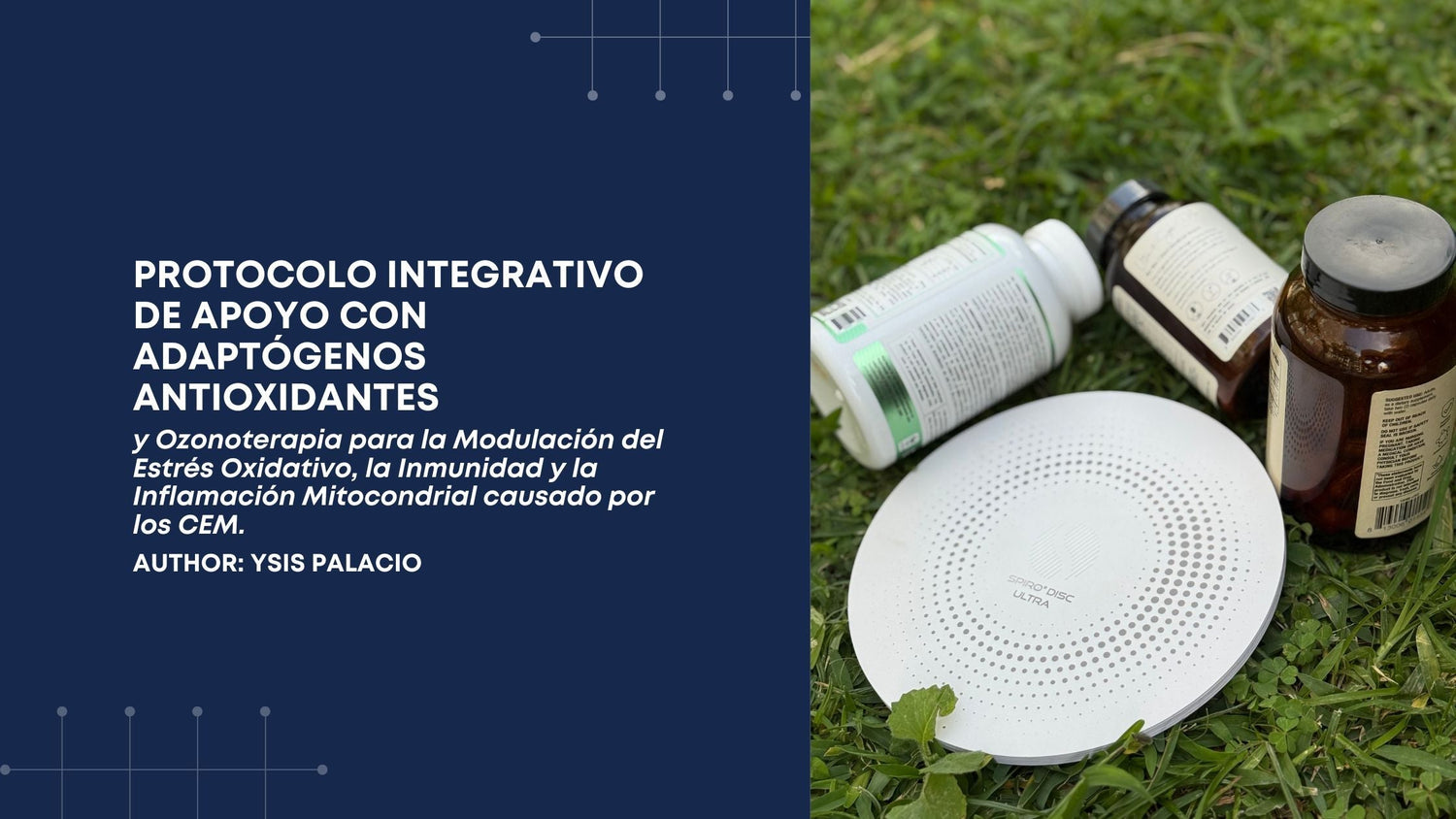As an electromagnetic field (EMF) researcher for the past 20 years, I have explored the various possibilities for monitoring the electromagnetic environment, both in cities and rural areas around the world. The first question we must ask ourselves is: What do we really want to monitor? Are we interested only in the artificial microwaves surrounding our cities? Or do we also want to observe exposures to alternating current (AC) frequencies? And if so, how do we establish a benchmark that allows us to compare natural versus artificial exposures?
A key challenge is identifying and mapping areas where coherent magnetism is significant. How can we map these areas without first mapping a region's naturally occurring hypoactive and hyperactive zones? Imagine if we had a system similar to Google Maps, but focused on the electromagnetic profile of each area. Although it may seem impossible, let's remember Mandela's words: "It always seems impossible until it's done."
The first step is deciding where to start. There are various tools, and so far, one of the most interesting systems I've found for scanning the electromagnetic environment is BioWell's EPI, which allows me to identify anomalies in the areas I visit. However, in my search, I came across a fascinating piece of work worth sharing: the possibility of monitoring Schumann resonances affordably and effectively, using a relatively homemade system. This article aims to discuss this idea and motivate others to take the step, build their own system, and, better yet, share the results with the EMF consulting community. Perhaps, together, we could form the first mini-global Schumann resonance monitoring network.
The importance of Schumann resonances
Over the course of more than a decade, working with hundreds of people suffering from electromagnetic sensitivity (EHS), I have discovered that many of them react significantly to atmospheric changes. These individuals not only experience discomfort related to exposure to electromagnetic fields, but are also able to perceive changes in the environment that could be related to natural phenomena, such as storms or even earthquakes.In many cases, people with EHS anticipated storms or tremors minutes before they occurred, with a precision that baffled me. Throughout my research, I noticed an intriguing coincidence: when the Russian station that monitors the Schumann resonances recorded variations, those same individuals reported discomfort or disorientation. This raises profound questions and opens a line of research into the relationship between Schumann resonances and human biology.
Schumann resonances are electromagnetic pulses generated by global electrical activity, with frequencies of 7.8 Hz, 14 Hz, 20 Hz, and higher. Although it has traditionally been thought that only birds and some animals have an innate capacity for magnetoreception, these findings suggest that humans may also be sensitive to these changes. The Schumann resonance, then, lies at the heart of a still-unexplored question: how does it actually affect living organisms, and how can we delve deeper into this phenomenon? As we make progress in this area, it is crucial to open the field to new research exploring these connections.
Innovative technology for the detection of ELF waves
The study, led by Constantinos I. Votis, Giorgos Tatsis, Vasilis Christofilakis, Spyridon K. Chronopoulos, and their team, presents an innovative approach for detecting Schumann resonances in the ELF (Extremely Low Frequency) range. Their main objective was to design a low-cost, portable, and autonomous receiver capable of capturing the largest possible number of harmonics of the Schumann resonances. This device has the potential to revolutionize the way we monitor natural electromagnetic phenomena.
The team developed a magnetic induction antenna based on mumetal, a material known for its high magnetic permeability, which allows it to sensitively detect extremely low-frequency magnetic fields. The system includes two identical coils placed back-to-back, which improves the capture of electromagnetic signals from multiple directions, thus increasing the clarity of the measurements.
The signal conditioning chain, which includes several stages of amplification and filtering, amplifies weak electromagnetic signals and eliminates background noise that could interfere with measurements. The system's most notable feature is its portability, which allows it to operate in remote areas away from urban electromagnetic pollution, a crucial factor for obtaining accurate measurements.
This work has demonstrated that the receiver can capture up to six harmonics of the Schumann resonances in just 10 minutes of acquisition time, a significant advance compared to previous systems that required much longer measurement times. This type of innovation not only facilitates geophysical research but also opens up new possibilities for real-time monitoring of atmospheric and ionospheric conditions.
Field tests: results and findings
To evaluate the system's effectiveness, measurements were conducted at several locations in northwestern Greece, selected for their low human-caused electromagnetic interference. These areas offered ideal conditions for testing the system's performance, as the lack of electromagnetic noise generated by human activities allowed for more accurate and clean data.
Tests revealed that the system can detect up to six harmonics of the Schumann resonances, with clear peaks at frequencies of 7.8 Hz, 14 Hz, 20 Hz, and others. Measurements were taken at 10-minute intervals, demonstrating the system's efficiency compared to previous methods that required much longer acquisition times.
One of the key sites was a small chapel located in a gorge 570 meters above sea level, where electromagnetic interference was almost zero. The results not only validate the system's effectiveness but also pave the way for future research into the influence of Schumann resonances on geophysical and atmospheric phenomena.
Challenges and limitations
Despite the encouraging results, the system still faces some challenges, particularly regarding interference from human sources. Although the system's filters help mitigate noise, there is always the possibility that external interference could degrade the quality of the measurements, especially in less controlled environments.
One possible improvement is the incorporation of Spiro technology, which could stabilize signals and reduce interference. The Spiro Card (SP1) could provide an appropriate level of filtering to maintain signal integrity, similar to how SP2.3 has improved the calibration of BioWell's GDV camera in outdoor environments. This would allow the system to operate more accurately in a wider range of environmental conditions, a solution the Society of CEM Consultants could explore as a practical improvement for this prototype.
While the system is designed to capture frequencies in the ELF range, there is still a need to expand its capacity to cover a wider frequency range. As research progresses, implementing new filtering techniques or redesigning the antennas could offer viable solutions to overcome this limitation.
 Conclusion
Conclusion
Monitoring Schumann resonances is an emerging field that offers vast potential to improve our understanding of the natural electromagnetic environment and its impact on living organisms. The development of portable and affordable systems, such as the one we have explored in this article, represents a key advance in our ability to capture these phenomena and analyze them efficiently and accurately. Field tests have shown that this technology can effectively detect Schumann resonances, even in environments with little human interference, opening up new opportunities for geophysical and atmospheric research.
However, we also face significant challenges, such as the need to improve signal stability and reduce external interference. Technologies such as Spiro filtering can play a key role in system optimization, providing a layer of protection against electromagnetic noise and enabling clearer and more reliable measurements. These improvements will not only increase system accuracy but also facilitate their deployment in a variety of environments.
Beyond the technical aspects, the true value of this technology lies in its ability to help us better understand how the Earth and its electromagnetic field interact with living beings. Schumann resonances, with their natural oscillations, offer a gateway to explore these interactions and potentially open up new avenues of research. However, as I mentioned before, I cannot add more research projects at this time, as my capacity is limited by the efforts I have underway. Even so, this article is intended as a guide, an invitation to those interested to see where they should focus their attention and be encouraged to take the initiative.
What I can offer is my support and willingness to those who wish to delve deeper into this line of research. If a group of consultants or researchers decides to join this effort, I would be happy to help them disseminate their work and connect them with others who, like me, see this work as a practical and valuable opportunity. Together, we could create a monitoring and collaboration network that would truly make a difference in the advancement of this field.
Now is the time to act. If you are interested in contributing to this cause, I invite you to do so. You can develop your own monitoring systems, be part of this effort, and, in the process, contribute your own small part. Science advances thanks to collaboration and collective action. I am confident that together we can transform our understanding of the electromagnetic environment and its impact on our lives, creating solutions that truly benefit society.





